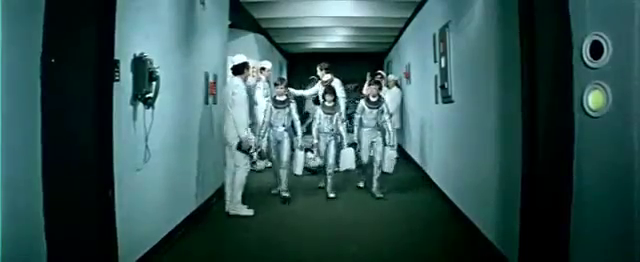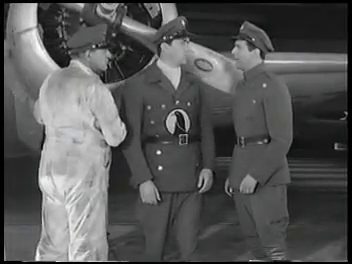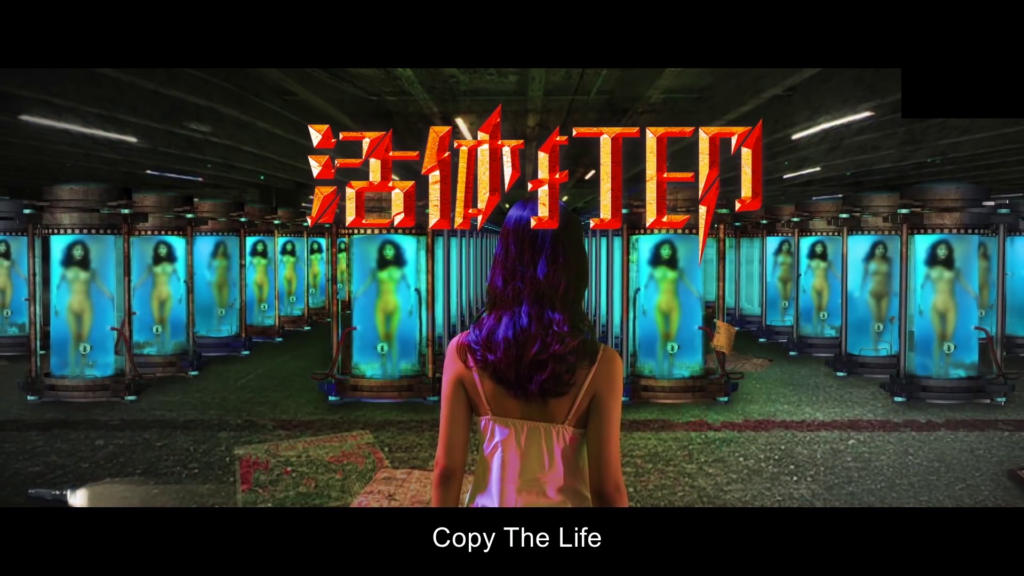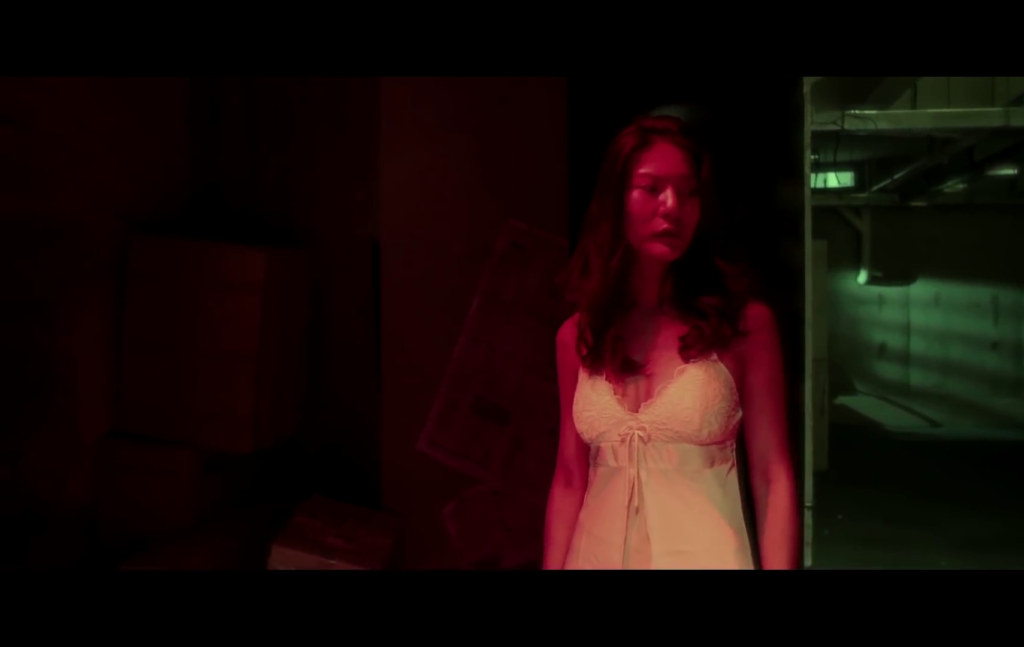-
#460 – Spy Smasher (1942)
Spy Smasher (1942)
Film review #460
Director: William Witney
SYNOPSIS: The masked hero “Spy Smasher” is captured in Paris on a secret mission to obtain plans for sabotage operations in the United States. He escapes back to his home country, where he is reunited with his brother Jack. However, the Nazis have also made their way to America shores, and the two team up with intelligence officer Admiral Corby to counter the threat…
THOUGHTS/ANALYSIS: Spy Smasher is a 1942 movie serial comprised of twelve chapters. It is based on the comic book series of the same name. The serial opens up in Paris, where the eponymous masked hero “Spy Smasher” is on a secret mission to obtain plans for a sabotage operation to be carried out in the United States. He is, however, captured, and after unsuccessful torture attempts, he is sentenced to death in front of a firing squad. Fortunately, a member of the French resistance, Pierre Durand, fakes his death, and is able to smuggle him back to the United States. The opening of this serial is quite uncharacteristically dark compared to others of the genre: The scenes of torture (implied, but shown just offscreen), and the firing squads are perhaps a more authentic look at what was happening during WWII at the time than other serials portrayed. From the outset, the serial feels a little more grown up than others, which is odd considering they were mostly aimed at younger viewers. Back in the United States, the Nazis have snuck in and are on a train to carry out their plans, when one of them recognises Spy Smasher and attacks him. It turns out that it is not Spy Smasher at all, but his brother Jack, and Alan (who is Spy Smasher in disguise) defeats the Nazis and reveals himself to his brother. The two team up with navy intelligence officer Admiral Corby and his daughter Eve (Jack’s fiancée) to counter the Nazi threat that Alan/Spy Smasher helped to expose. The rest of the serial’s story is simple enough to follow, but there’s a lot of different locations, such as Spy Smasher returning to Paris to free Pierre from the Nazis, which helps keeps things varied and interesting. The variety slows down in the latter half of the serial, but the finale has plenty of action and consequences to make it pretty enjoyable.
The characters are (as always) a familiar bunch insofar as they all follow very specific tropes that form the backbone of the serial format’s character roster. Jack and Alan are the typical young male stars that do all the action sequences and punch plenty of Nazis in the face. Admiral Corby is a typical older man that serves as the boss who receives intelligence and gives instructions. His daughter is the token female, who serves the typical role of simply being a family relation to a male character. It’s a pretty small cast, but it means that more time is focused on the actions of Spy Smasher, which is what you want to see really. The villains are Nazis. That’s it. They are mostly in their full uniforms somewhat faithfully recreated, whereas a lot of serials simply imply that the villains are Nazis, or working for a “foreign country.” The villains are led by a masked individual known unsurprisingly as “The Mask.” Despite the fairly decent costumes on the villains, the mask for The Mask is literally a piece of white cloth covering his face with some holes cut out for the eyes. I’m not sure why they bothered, since his identity isn’t of any importance, and he routinely removes it when communicating to certain people. The mask is apparently the villain from the comics, so I suppose he was just added to tie in with the comic, but he doesn’t stand out as a unique villain.
The production values are pretty good for a serial, and although there’s no exotic or novel sets, what we do get is sturdy and has a decent scale. The action scenes on top of speeding trains and the like are also well done, and deliver a good sense of danger. As mentioned the costumes are pretty good as well…apart from The Mask’s “mask” anyway. There’s also some plots involving planes and ray guns, which again add to the variety. Overall, Spy Smasher is a serial that stands above the average in terms of quality in the genre, thanks to it’s variety in the story and its grounded, consistent logic, alongside some good production values and camerawork. It’s a very good example of the wartime serials that portrayed the Nazis as the villains, without the film being simply propaganda. All in all, worth your attention if you’re a serial fan.
-
#459 – A Great Space Journey (1974)
A Great Space Journey (1974)
Film review #459
Director: Valentin Selivanov
SYNOPSIS: The All-Union Children’s Space Competition aims to find three children that will be the first youths in space aboard a new spaceship. Sveta, Sasha and Fedya are chosen from the one hundred thousand applicants to embark on the mission with the sole adult on board, Captain Egor Kalinovsky. After the ship is launched, Egor is found to be sick, and placed in quarantine, leaving the children in charge of the spaceship…
THOUGHTS/ANALYSIS: A Great Space Journey is a 1974 children’s science-fiction film based on the play The First Three, or the Year 2001 by Sergey Mikhailov. The film opens up introducing a space program that will choose three children to be the first young people in space. Out of one hundred thousand applicants from across the Soviet Union, three children are selected: Sveta Ishenova, Sasha Ivanenko, and Fedya Druzhinin. The three are sent into space on the spaceship Astra with the only adult on the voyage, Captain Egor Kalinovsky, who is in charge of the mission. When Egor is found to have a fever, that may spread to everyone else, he is placed in quarantine, leaving the children having to take charge of the ship and the mission. The story is fairly simple, being a film aimed at children, and is fairly light on the details concerning what the mission they are on actually is. Nevertheless, there is plenty that is going on in the film, as the children have to navigate through a fair amount of emergencies and strange situations as their journey continues. Not having an overarching objective hinders any sense of direction and accomplishment the film has, but nevertheless, there’s a good sense of adventure and enough variety to capture viewer’s imaginations. There’s a bit of a twist in the story that explains most things at the end, but I’ll discuss that at the end too.
The three main characters are the children that were chosen through the space program. Each of their characters are developed through flashbacks to when they were undergoing the testing, highlighting their relationships with their parents and each other. There’s also Egor, the only adult on the spaceship, who is placed in quarantine, but can still communicate to the others. One of the children, Fedya, is placed in command of the mission after Egor is quarantined, and it is hinted that he is troubled by something about the mission, but refuses to disclose it. Sasha is very animated, and teaches the other children dance moves to keep them entertained. Sveta is more headstrong and quick to rush into situations (contrasting with Fedya’s more reserved nature) and perhaps has some romantic feelings for Sasha. Between the three children, they have a good range of personalities, and at least one of them will appeal to children that the film was aimed at. Their interactions feel genuine in this extraordinary situation, and are generally likeable in their own way. There’s also a good balance between the children needing to act like adults, and also like children; such as when they complete their task running the spaceship, and immediately go get some ice cream from a nearby fridge.
The ending of the film reveals that the entire mission is actually just a simulation for the children to test their abilities. Fedya initially works it out, but keeps it secret for the remainder of the mission. You might think this is a bit underwhelming and disappointed that the children do not actually go into space…and in fact, that’s why actual soviet cosmonaut Alexey Leonov appears at the end of the film saying this exact thing. He also says that the time will come soon (?) when children will really go into space, and encourages children to continue looking forward to it and chasing their dreams, which is nice. The film also rewards the children for the completion of the simulation with a celebration and fanfare, so it still feels rewarding, and as if the characters accomplished something.
The quality of the sets and production values of the film certainly deserve some mention. The set of the spaceship is detailed, and the shots of the ship travelling through space are quite convincing given the time it was released. the model shots of the spaceship and other things also have quite a lot of detail in them. The whole aesthetic evokes the look of 2001: A Space Odyssey, which I’m sure is no coincidence. Given that the play the film is based on is called The First Three, or the Year 2001, it would certainly there’s a connection, but whether it is an homage, a parody, or knock-off, I’m not sure. The film was also apparently in production for two years, which I think shows in the look of the finished product. There’s also some musical interludes which don’t really fit in too well, but again probably something children would enjoy. Most notably, the song’s were written by a young Alexey Rybnikov, who would become one of the Soviet Union’s and subsequently Russia’s most famous composers, apparently in no small part due to the popularity of the soundtrack of this film.
Overall, A Great Space Journey is a fun little adventure that I’m sure its target audience would have enjoyed. The film is well constructed, and great effort had obviously been taken to make detailed and engaging sets. The characters themselves are relatable and distinct, without being too much of walking tropes, and the story has plenty of things going on in it, even if it lacks direction or purpose sometimes. It packs in a fair amount of detail and adventure in just over sixty minutes, and with some decent editing, always has something interesting going on.
-
#458 – Blackhawk (1952)
Blackhawk (1952)
Film review #458
Directors: Spencer Bennet, Fred F. Sears
SYNOPSIS: The elite group of air pilots, The International Brotherhood, led by the heroic Blackhawk thwart threats to the country without the use of weapons. They are tasked with stopping a foreign spy and her various schemes, leading to a series of daring adventures.
THOUGHTS/ANALYSIS: Blackhawk is a 1952 serial comprised of fifteen chapters, based on the comic series of the same name. The action centres around the group of air pilots called The International Brotherhood, a group of former WWII pilots led by the heroic Blackhawk. They are assigned the task of bringing down a foreign spy named Laska, who is working for a mysterious Leader. The story revolves around Blackhawk and his boys foiling Laska’s plots which are fairly varied throughout the fifteen chapters. There’s no real overall plot other than just stopping Laska; there’s some smaller plots concerning death rays and recovering new energy sources which would be the full plot to some other serials, but this one condenses each of these plots into two or three chapters, which keeps things somewhat varied and interesting, as some serials that hinge around just one of them get stale very fast. However, having very little to tie the whole serial together makes it suffer a lack of direction. On the other hand however, it’s just good guys chasing bad guys, and that’s all it needs to be. If you’re watching a serial, you won’t be expecting a complex narrative, and they’re mostly for younger viewers as well, so they just want to see the good guys fight the bad guys, and on that point the serial has enough action to make it interesting enough. You also have three or so chapters in Mexico in a more self-contained story, which would have been an optional part for cinemas to purchase depending on whether they bought either the twelve chapter or fifteen chapter version of the serial (a fairly standard practice at the time).
The heroes are a group of former WWII air pilots that work together to take down foreign enemies in their planes. They also make a point that they don’t use guns or weapons, but never explain why. Perhaps it’s something they did in the comics. The head of these pilots is Blackhawk, who is a very typical protagonist, being the young-ish, stocky man who gets to throw plenty of punches. The rest of his team don’t have much character themselves, and just serve as an extra pair of hands for piloting planes and throwing fists in a fight. The villains are also fairly forgettable, with the usual cast of henchman identified as working for the “Reds,” signifying the shift in America’s enemies after WWII. Laska, who serves as the main villain is played by Carol Forman, who played quite a few similar lead female villains in serials such as The Black Widow and Superman. She knows how to play the role, but her character is never given any motivations or depth, and simply serves as a simple villain. There’s also a mysterious Leader who gives Laska her orders, whose identity is kept secret until the very end. He only appears very sporadically, and his identity has no impact on the story. In fact, I didn’t even recognise his character as it was one that was apparently killed off early in the serial.
Produced in 1952, after both WWII and the peak of the serials, Blackhawk has little to offer the genre. With serial veteran Spencer Gordon Bennet being one of the directors, the fight scenes are decently co-ordinated, and there’s some variety in the shots, but nothing too special. A lot of the climaxes of the chapters seem to end up in factories for whatever reason, but there’s some aerial combat too and the usual vehicles going off cliffs. As mentioned, the serial was released after the peak of the format, so there’s nothing special to write about. Even the spike in the popularity of war heroes as characters in serials that started after WWII was starting to wain in 1952 in favour of looking to the future with science-fiction and the space race. As such, this is the last serial that focused on air combat and planes. Overall, Blackhawk is a pretty standard serial, but fails to offer anything special.
-
#457 – My Girlfriend is a Duplicate (2021)
My Girlfriend is a Duplicate (2021)
Film review #457
Directors: Xing Guangjun, Tu Biao
SYNOPSIS: Chen Fei often wakes up after having a dream where her boyfriend Ma Jia tries to choke her. Ma dismisses it, but when Chen gets suspicious about Ma’s work, she discovers a secret laboratory under their home, within which a number of clones of her are being stored. It turns out that she herself is one of these clones of Ma’s girlfriend that he accidentally killed, and that the cloning technology is being sought by a nefarious organisation…
THOUGHTS/ANALYSIS: My Girlfriend is a Duplicate is a 2021 Chinese romance sci-fi film. It is based on the novel “Dragon Fleet” by Tu Biao, who also co-directs this film. The film centres around the young couple Ma Jia and his girlfriend Chen Fei. She is beset by bad dreams about being choked by her boyfriend, which he dismisses as just stress. Ma himself is heavily distracted by his research, which brings in no money for them, and is an added source of stress. When Chen gets curious about the basement of their house, which Ma maintains is just full of junk. When Chen eventually makes her way down there to investigate, she makes a startling discovery: a large number of clones of herself in suspended animation. She eventually learns from one of the other clones that they are all – herself included – clones of the original Chen Fei, who was Ma’s girlfriend before he accidentally killed her. However, he was able to “print” clones of her thanks to the research he has been doing that builds upon his Father’s own research; part of a secret government project to enhance the health of its citizens. The story has a fair amount of different elements in it from romance and science-fiction, so the story has some variety in it. The science-fiction aspect is the most interesting aspect of it, as we learn about the couple’s past. The romance aspect isn’t developed very much, and plays out with beginning as a typical young couple, and never really exploring how this discovery would affect their relationship. When Chen makes the discovery, the film shifts almost entirely to the science-fiction genre, with a lot of the story told through flashbacks. At just over an hour long, we don’t see anything more than these series of flashbacks and a brief follow-up focusing on the consequences of it.
The cast of the film is minimal, with the couple being the main point of focus for relationship drama, and a villain who emerges near the end. There’s some dialogue involving another clone of Chen, referred to as No. 126, and the ‘current’ clone of Chen, but it seems to set her up as her own unique character and then never go anywhere with it. I’m not sure if you’re supposed to empathise with Ma, given that he did kill his girlfriend, and has to continue re-cloning her as the clones have a fairly short lifespan. The ethics of the whole process seems very much unexplored, which seems odd for a science-fiction film, but less odd when you consider which country it is produced in.
In terms of production, the film isn’t up to the standard of big budget Hollywood films: the editing is awkward, and things often move around between shots, which disrupts the continuity. There’s also the rather unconvincing special effects and the wooden acting that doesn’t convey the powerful feelings that this couple are supposedly supposed to have for each other. The most interesting aspect of this film, as with most films produced in country’s with strict censorship programs, is how the film has to do and show certain things to be approved for release. At the start, we are told about a secret government bureau made to improve the health and wellbeing of the Chinese people, but it is done in such a way that it doesn’t make the government look bad or keeping dark secrets from the public. As such, any more details about how secret the bureau is and what it actually did is not addressed. The villain is outlined as being a traitor who wants to steal the Bureau’s research in order to sell it to China’s age-old enemy Japan. There’s also a scene where the villain goes to pray at an altar with what I presume is meant to be the Chinese Premier, to which Ma calls him out to “stop pretending” that he is paying his respects. This again is obviously reinforce the message that the villain is not part of the government and is this traitor that deserves no sympathy. As mentioned earlier, sci-fi films such as this would usually address the ethics of the concept of cloning, and whether it is right to do it. This film completely avoids saying whether it is right or wrong: the only wrong it highlights is selling the secrets to a foreign enemy. It is perhaps important to highlight that the Chinese government is often found at the forefront of cloning research, and any kind of critique could easily be seen as a critique of government research. The trouble is that such explorations of ethics and possibilities of science and technology really is at the core of the science-fiction genre, and in completely avoiding that part of it, this film feels quite pointless and empty.








































